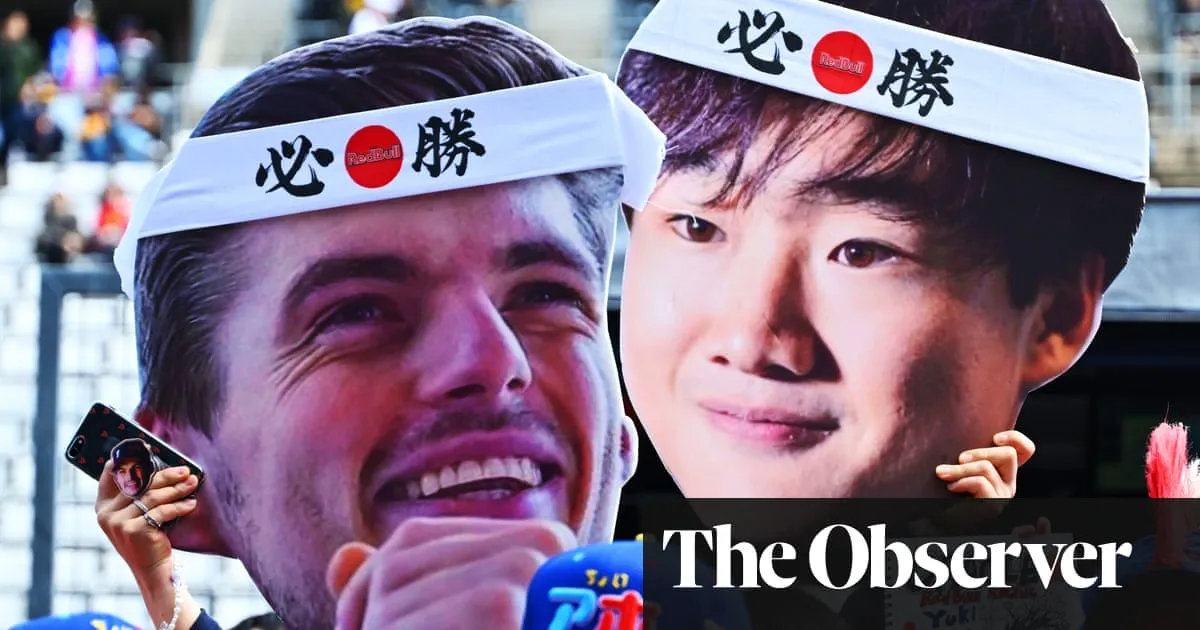
The past 12 months have been marked by turbulence and turmoil for Red Bull Racing, leading to speculation about the future of their star driver, Max Verstappen. Despite these challenges, Verstappen managed to secure his fourth Formula One title, demonstrating remarkable resilience in the face of a recalcitrant car. However, the prospect of clinching a fifth title this year appears daunting as the team shifts from a phase of undisputed dominance to grappling with a car that they struggle to tame.
At the recent Japanese Grand Prix, the spotlight was on Yuki Tsunoda, who was hastily promoted to Red Bull from the sister team, Racing Bulls, following the swift departure of Liam Lawson. This decision, described as a “panic move” by former driver Giedo van der Garde, reflects the ongoing disorder within Red Bull. The fans, however, embraced Tsunoda’s promotion enthusiastically, donning newly customized attire to celebrate their home hero in one of F1’s top cars, creating a vibrant atmosphere at the event.
The turbulent decisions within the team are emblematic of broader issues facing Red Bull. Christian Horner, the team principal, cited concerns about Lawson’s ability to perform, while Helmut Marko, the team’s motorsport adviser, attempted to justify the controversial decision regarding the driver lineup. Marko's explanations seemed disjointed, but he emphasized the urgent need for the team to deliver results for Verstappen, especially given the performance clauses included in contracts for top drivers.
With teams like Mercedes and Aston Martin keenly aware of the situation, Red Bull must produce a competitive car for Verstappen. After an astounding performance in 2023, where they won 21 out of 22 races, they now find themselves struggling for victories. Although Verstappen showcased his talent by securing pole position at the recent Grand Prix, the overall decline in performance raises concerns.
The current situation at Red Bull is reminiscent of the decline witnessed at Manchester City. As the team navigates through its internal challenges, it is essential to remember that this was not an isolated incident. Prior to the last season, Horner faced an investigation regarding inappropriate behavior, which, although resolved, revealed underlying vulnerabilities within the organization.
The team has endured several significant departures, including chief engineering officer Rob Marshall, who moved to McLaren, and Adrian Newey, the team's chief designer, who joined Aston Martin. These exits, along with others, have raised red flags about the stability and future direction of Red Bull Racing.
Despite these challenges, Max Verstappen has remained focused and resilient. Initially, the car exhibited the same dominance as in previous years, but all changed at the Miami GP when McLaren's upgrades propelled them ahead. Red Bull's attempts to maintain their position only exacerbated existing issues, leading Verstappen to describe the car as undriveable.
As the season progressed, it became evident that the car's design philosophy, which prioritized extreme performance over driveability, was flawed. Verstappen’s exceptional talent had previously masked these deep-rooted issues, but as the competition intensified, the car's limitations became glaringly obvious. Newey identified these problems late in 2023, but the subsequent decisions by the team did not address the escalating challenges.
The recent switch between Lawson and Tsunoda serves as a crucial test for Red Bull. If Tsunoda excels, it will highlight the team's misjudgment in their driver selection. Conversely, if he struggles, it may indicate that the underlying issues are not solely driver-related, but rather systemic problems within the team. With Red Bull now two decades into their journey in Formula One, the past successes serve as a reminder that in this competitive landscape, no guarantees exist. The challenge ahead is not only for Tsunoda but for Red Bull Racing as a whole to restore their status among the elite teams in Formula One.